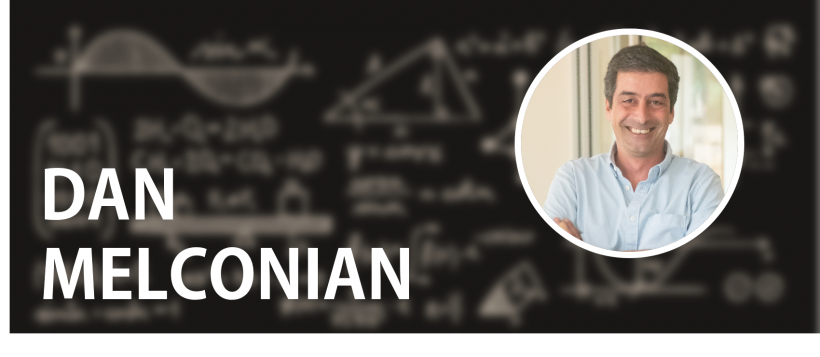WHAT DID THE 2011 EARLY CAREER AWARD ALLOW YOU TO DO?
The Standard Model of particle physics describes the known fundamental particles and their interactions, but it is known to be incomplete. The Large Hadron Collider (LHC) has confirmed a Higgs-like particle, but what else is beyond the Standard Model that we haven’t seen…yet? In addition to other searches in a variety of fields, precision measurements in nuclear beta decay offer a way to test the Standard Model and search for new physics.
To achieve the extremely high precision required to test the Standard Model, we need experimentally elegant and technically innovative approaches. This Early Career Award provided me with the resources needed to demonstrate, with my collaborators, ground-breaking techniques in polarizing laser-cooled atoms and then measuring their beta decay. Our 0.3% measurement of the correlation between the initial nuclear polarization and daughter positron of a nuclear decay is the most precise yet. We are poised to improve it to <0.1%.
This Early Career Award also made it possible for me to build a unique Penning trap system at the Texas A & M Cyclotron Institute. Very neutron-deficient atoms often emit a proton following beta decay, and the proton’s energy is dependent on new physics. We designed a unique cylindrical trap to allow detection of all positrons and protons from the decay. As the radioactive ion beams are developed, we have commissioned the Texas A & M University Penning trap (TAMUTRAP) system by measuring masses of stable ions in our novel trap with precisions and efficiencies comparable to other facilities.
ABOUT:
Dan Melconian is a professor in the Department of Physics & Astronomy and the Cyclotron Institute, Texas A&M University.
SUPPORTING THE DOE SC MISSION:
The Early Career Research Program provides financial support that is foundational to early career investigators, enabling them to define and direct independent research in areas important to DOE missions. The development of outstanding scientists and research leaders is of paramount importance to the Department of Energy Office of Science. By investing in the next generation of researchers, the Office of Science champions lifelong careers in discovery science.
For more information, please go to the Early Career Research Program.
THE 2011 PROJECT ABSTRACT:
Fundamental Electroweak Interaction Studies Using Trapped Atoms and Ions
Ion and atom traps at radioactive ion beam facilities have opened up a new vista in precision low‐energy nuclear physics experiments. They provide ideal sources for studying the decays of rare isotopes: The trapped samples are extremely cold (< 1 mK) and localized (< 1 mm2), and the trap forces are weak enough that the daughter particles escape with negligible distortions to their momenta.
This project will construct a large‐diameter, open Penning trap and couple it to T‐REX (Texas A&M University Reaccelerated Exotics), which is the upgraded radioactive ion beam facility at the Cyclotron Institute at Texas A&M University. The flagship experimental program will test our understanding of the fundamental symmetries underlying our current theory of electroweak interactions by measuring the b − n correlation parameters and ft values from isospin T = 2 superallowed ˉ‐delayed proton decays. Comparison of these precision measurements to theoretical predictions will either confirm the Standard Model to a higher degree or point to new physics and help guide theorists toward developing the New Standard Model.
In addition, the versatility of this system will also make it a general-purpose decay station where any number of other low‐energy experiments will be possible (mass measurements, laser spectroscopy, electron‐capture studies, etc.).
RESOURCES:
B. Fenker, J.A. Behr, D. Melconian, R.M.A. Anderson, M. Anholm, D. Ashery, R.S. Behling, I. Cohen, I. Craiciu, J.M. Donohue, C. Farfan, D. Friesen, A. Gorelov, J. McNeil, M. Mehlman, H. Norton, K. Olchanski, S. Smale, O. Thériault, A.N. Vantyghem and C.L. Warner, “Precision measurement of the nuclear polarization in laser-cooled, optically pumped 37K.” New J. Phys. 18, 073028 (2016). [DOI: 10.1088/1367-2630/18/7/073028]
B. Fenker, A. Gorelov, D. Melconian, J.A. Behr, M. Anholm, D. Ashery, R.S. Behling, I. Cohen, I. Craiciu, G. Gwinner, J. McNeil, M. Mehlman, K. Olchanski, P.D. Shidling, S. Smale, and C.L. Warner, “Precision measurement of the β asymmetry in spin-polarized 37K decay.” Phys. Rev. Lett. 120, 062502 (2018). [DOI: 10.1103/PhysRevLett.120.062502]
M. Mehlman, P.D. Shidling, R.S. Behling, L.G. Clark, B. Fenker, and D. Melconian, “Design of a unique open-geometry cylindrical Penning trap.” Nucl. Instrum. Meth. Phys. Res. A712, 9 (2013). [DOI: 10.1016/j.nima.2013.02.004]
DOE EXPLAINS… offers straightforward explanations of key words and concepts in fundamental science. It also describes how these concepts apply to the work that the Department of Energy’s Office of Science conducts as it helps the United States excel in research across the scientific spectrum. For more information on the Standard Model of Particle Physics and DOE’s research in this area, please go to “DOE Explains…the Standard Model of Particle Physics.”
Additional profiles of the Early Career Research Program award recipients can be found at https://www.energy.gov/science/listings/early-career-program.
The Office of Science is the single largest supporter of basic research in the physical sciences in the United States and is working to address some of the most pressing challenges of our time. For more information, please visit www.energy.gov/science.
Sandra Allen McLean is a Communications Specialist in the Office of Science, Office of Communications and Public Affairs [email protected].



